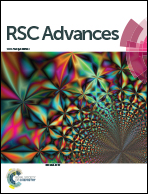Mechanical behaviors of AlCrFeCuNi high-entropy alloys under uniaxial tension via molecular dynamics simulation
Abstract
Although a high-entropy alloy has exhibited promising mechanical properties, little attention has been given to the dynamics deformation mechanism during uniaxial tension, which limits its widespread and practical utility. According to the experiment, an atomic model AlCrFeCuNi HEA was built using a melting and quick quenching method. In this work, the mechanical behaviors of the AlCrFeCuNi high-entropy alloy under uniaxial tensile loading are studied using atomistic simulation to investigate the evolution of dislocation and stacking fault as well as deformation twinning. The results show that calculations for the elastic properties and stress–strain relations are in excellent agreement with recent experimental results. Above all, the AlCrFeCuNi1.4 HEA not only has high strength, but also exhibits good plasticity which is qualitatively consistent with the experiment. Similar to the mechanical properties of single-crystal metals, stress fluctuation during plastic deformation of the high-entropy alloy is always accompanied with the generation and motion of dislocation and stacking fault with the increase of strain. In addition, the dislocation–dislocation interaction, dislocation–solid solution interaction, deformation twinning and detwinning occur after the yield point. Furthermore, the dislocation gliding, dislocation pinning due to the severe lattice-distortion and solid solution, and twinning are still the main mechanisms of plastic deformation in the AlCrFeCuNi1.4 high-entropy alloy. This atomistic mechanism provides a fundamental understanding of plastic deformation in a high-entropy alloy.


 Please wait while we load your content...
Please wait while we load your content...